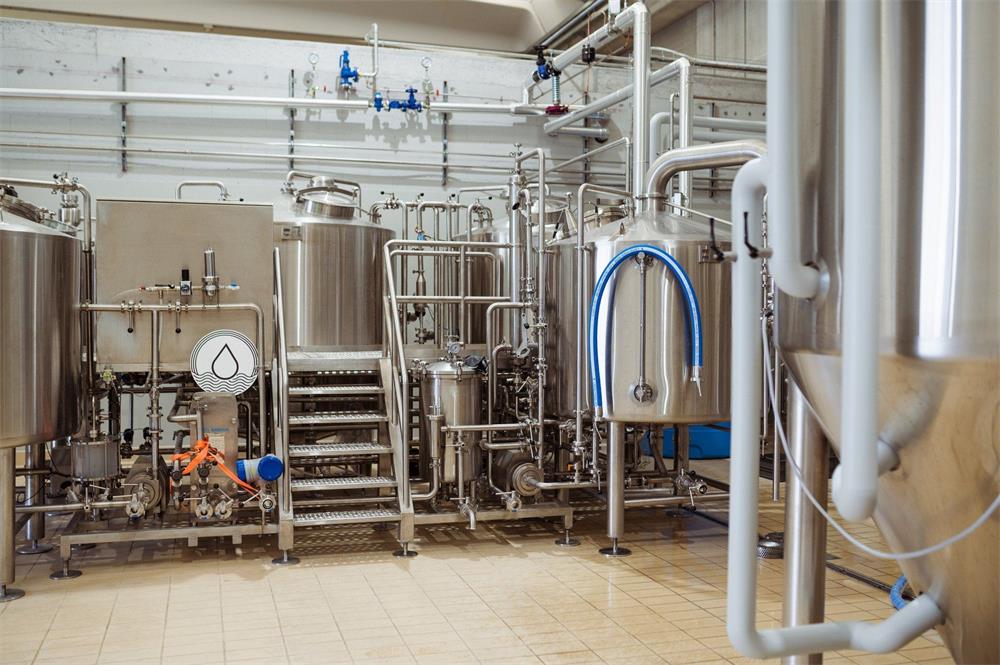electric beer brewing system
Electric beer brewing systems are revolutionizing the homebrew hobby, offering a convenient, precise, and all-in-one way to craft delicious beer from grain to glass. This guide dives deep into the world of electric brewing systems, exploring their functionalities, benefits, and everything you need to know to brew fantastic beers from the comfort of your home.
electric beer brewing systems: An Overview
Imagine brewing restaurant-quality beer without the hassle of propane burners or bulky equipment. Electric brewing systems make this dream a reality. These self-contained units consolidate the brewing process into a single vessel, streamlining steeping grains (mashing), boiling wort, and controlling fermentation temperatures. They typically feature:
- Electric heating elements: These elements provide consistent and adjustable heat for precise temperature control during mashing and boiling.
- Digital controllers: These user-friendly interfaces allow you to program and monitor brewing stages, maintaining optimal temperatures throughout the process.
- Integrated pumps: These pumps circulate wort during mashing, ensuring even grain extraction and a more consistent flavor profile.
- Grain baskets: These baskets separate spent grains from the wort after mashing, simplifying the lautering process (removal of wort from the grain bed).
- Large kettles: These kettles provide ample space for mashing grains, boiling wort, and fermenting your beer.
Electric brewing systems are perfect for:
- New brewers: Their user-friendly design and automated features make them ideal for beginners who want to experiment with brewing without the complexities of traditional stovetop methods.
- Space-conscious brewers: Their compact design allows for brewing in smaller kitchens or apartments.
- Busy brewers: Built-in automation features free you up during the brewing process, allowing you to multitask while your beer ferments.

Electric Beer Brewing System Features
Electric brewing systems come with a variety of features that enhance the brewing experience. Here’s a breakdown of some common features to consider:
| Feature | Description | Benefit |
|---|---|---|
| Grain capacity | This indicates the amount of grain (typically in pounds) the system can accommodate in a single batch. | Larger capacities allow for brewing higher gravity beers or larger batch sizes. |
| Pre-programmed profiles | These profiles automate the brewing process for popular beer styles. | Ideal for beginners or those who want a simplified brewing experience. |
| Multi-step programming | This allows for creating custom temperature profiles for unique beer styles or experimental brewing. | Offers greater control and flexibility for experienced brewers. |
| Built-in timers and alarms | These features remind you to add ingredients or take action at specific points in the brewing process. | Reduces the risk of errors and ensures consistent brewing. |
| Wireless connectivity | Some systems allow for monitoring and control via smartphones or tablets. | Offers greater control and convenience, allowing you to monitor your brew from anywhere. |
| Cleaning systems | These built-in features simplify the cleaning process after brewing. | Saves time and effort on post-brew cleanup. |
Choosing the right features depends on your brewing experience, desired level of control, and budget.
Electric Beer Brewing System Capacity, Space, Design & Layout
Electric brewing systems come in various sizes, with capacities ranging from 1 gallon up to 15 gallons and beyond. Here’s a table outlining considerations for capacity, space, design, and layout:
| Factor | Description |
|---|---|
| Capacity | Consider the amount of beer you typically consume and how often you plan to brew. |
| Space | Measure your available brewing area to ensure the chosen system fits comfortably. |
| Design | Electric brewing systems come in floor-standing and countertop models. Choose one that suits your space and personal preference. |
| Layout | Some systems have integrated handles, wheels, or casters for easy transport and storage. |
For example, a 3-gallon system might be ideal for a beginner brewing small batches, while a 10-gallon system would cater to a more experienced brewer who wants to produce larger quantities of beer.
Popular Electric Beer Brewing Systems
Here’s a table featuring some popular electric brewing systems, along with their capacity and price range to provide a starting point for your research:
| Electric Beer Brewing System | Capacity | Price Range |
|---|---|---|
| BrewZilla | 3.5 gallons to 5 gallons | $400 – $700 |
| Grainfather G40 | 11 gallons | $1,200 – $1,500 |
Electric Beer Brewing System Installation, Operation & Maintenance
Installation:
Electric brewing systems are generally straightforward to install. Most require minimal setup beyond following the manufacturer’s instructions, which typically involve:
- Placing the system on a sturdy and level countertop or floor space.
- Connecting the included hoses and pumps.
- Familiarizing yourself with the control panel and its functions.
Operation:
Electric brewing systems offer a user-friendly brewing experience. Here’s a general overview of the brewing process:
- Mashing: Fill the system with water and add crushed grains. The electric heating elements will raise the water temperature to the optimal range for steeping the grains, which activates enzymes and extracts sugars and flavors. The integrated pump can be used to circulate the wort during mashing, ensuring even extraction.
- Lautering: After mashing, the grain basket is lifted or removed to separate the wort (sugar-rich liquid) from the spent grains.
- Boiling: The wort is brought to a boil, where hops are added for bitterness, aroma, and preservation. Pre-programmed boil profiles or manual settings can be used to control the boil duration and hop additions.
- Cooling: The wort is rapidly chilled to a specific temperature suitable for yeast pitching. This can be achieved using an immersion chiller or a wort chiller attached to the system.
- Fermentation: The cooled wort is transferred to a fermenter, where yeast is pitched. During fermentation, the yeast consumes the sugars in the wort and produces alcohol and carbon dioxide.
- Bottling or kegging: Once fermentation is complete, the beer is bottled or kegged for conditioning and carbonation before enjoyment.
Cleaning:
Maintaining a clean brewing system is crucial for producing high-quality beer and preventing future batches from contamination. Most electric brewing systems have built-in cleaning cycles or recommend specific cleaning procedures. Generally, this involves using hot water and a cleaning solution suitable for stainless steel to sanitize all parts of the system that come into contact with wort or beer.
How to Choose an Electric Beer Brewing System
With a variety of electric brewing systems available, choosing the right one depends on your individual needs and preferences. Here’s a table to guide you through the selection process:
| Factor | Consideration |
|---|---|
| Experience level | Beginner-friendly systems offer pre-programmed profiles, while advanced systems provide more customization options. |
| Batch size | Consider how much beer you typically brew and choose a system with a suitable capacity. |
| Features | Decide which features are most important to you, such as pre-programmed profiles, wireless connectivity, or cleaning systems. |
| Budget | Electric brewing systems range in price. Determine your budget and choose a system that offers the features you desire within your price range. |
| Space | Measure your available brewing area to ensure the chosen system fits comfortably. |
| Brand reputation | Research online reviews and consider the brand’s reputation for quality and customer service. |
Reading user reviews and watching video demonstrations of different systems can also be helpful in making your decision.
Pros and Cons of Electric Beer Brewing Systems
Pros:
- Convenience: Electric brewing systems automate much of the brewing process, making it easier and less time-consuming than traditional methods.
- Precision: Digital controllers allow for precise temperature control, leading to more consistent and predictable brewing results.
- Safety: Electric heating elements eliminate the need for open flames, reducing the risk of fire or burns.
- Compactness: Electric brewing systems are generally more space-saving than traditional brewing setups.
- Ease of cleaning: Many systems have built-in cleaning cycles or features that simplify post-brew cleanup.
Cons:
- Higher upfront cost: Electric brewing systems typically have a higher initial cost compared to traditional stovetop brewing setups.
- Limited control (for some systems): Beginner-friendly systems with pre-programmed profiles may offer less customization for experienced brewers.
- Potential for malfunctions: While generally reliable, electrical components can malfunction, requiring repairs or replacements.

FAQs
| Question | Answer |
|---|---|
| What is the difference between a single vessel and a multi-vessel electric brewing system? | Single vessel systems combine all stages of brewing (mashing, lautering, boiling) in one kettle. Multi-vessel systems have separate vessels for mashing and boiling, offering greater control over the brewing process but requiring more equipment and space. |
| Can I use an electric brewing system to brew all types of beer? | Yes, electric brewing systems can be used to brew a wide variety of beer styles, from lagers and ales to stouts and IPAs. The flexibility depends on the system’s features and your ability to control fermentation temperatures for certain styles. |
| How much time does it take to brew beer using an electric brewing system? | The brewing time can vary depending on the beer style and the specific system you use. Generally, the brewing process itself (mashing, lautering, and boiling) can take several hours. However, fermentation typically takes one to two weeks, followed by additional conditioning time for carbonation. |
| Do I need any additional equipment to use an electric brewing system? | In addition to the brewing system itself, you will need some basic equipment for bottling or kegging your beer, such as bottles, a bottling bucket, sanitizer, and a capper (for capped bottles) or a kegging kit with CO2 canisters. You may also want to invest in hydrometers for measuring sugar content and fermentation progress, and carboy cleaning brushes for maintaining your fermenters. |
| How do I clean and maintain my electric brewing system? | Most electric brewing systems have built-in cleaning cycles or recommend specific cleaning procedures. Generally, this involves using hot water and a cleaning solution suitable for stainless steel to sanitize all parts of the system that come into contact with wort or beer. Following the manufacturer’s cleaning instructions is essential to prevent contamination and ensure the longevity of your system. |
| Where can I find recipes for brewing with an electric brewing system? | Many electric brewing system manufacturers offer recipe kits or online recipe resources specifically designed for their systems. There are also numerous online homebrew communities and websites that share electric brewing recipes for a wide variety of beer styles. |












